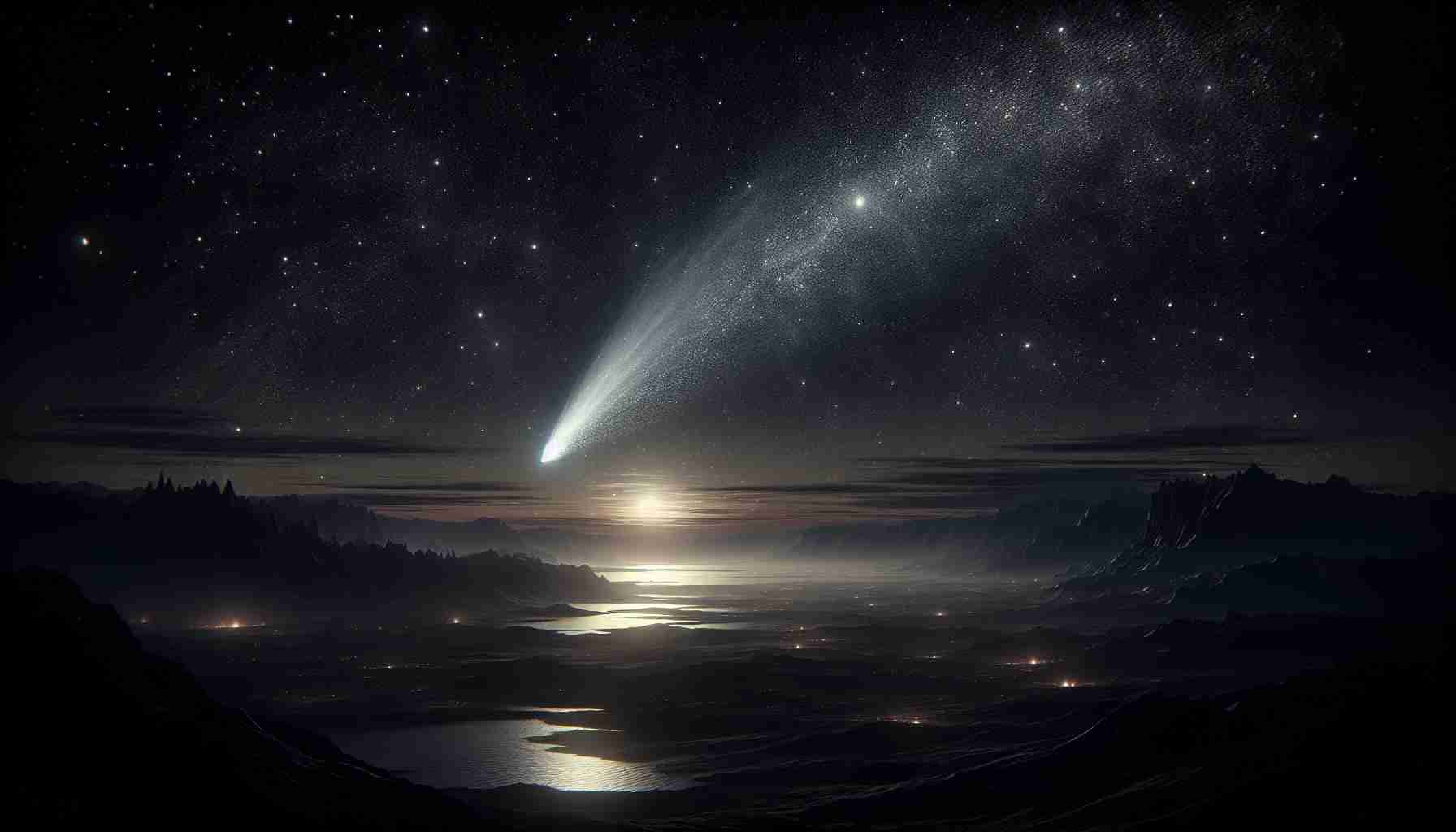Stargazers were treated to a mesmerizing celestial show yesterday evening as Comet C/2023 A3 Tsuchinshan-ATLAS, dubbed the “Comet of the Century,” graced the skies over Mesolongi.
Accompanied by favorable weather conditions, residents of Mesolongi managed to catch a glimpse of the extraordinary passage of the “Comet of the Century” shortly after 9:00 p.m., creating a rare spectacle above the Earth.
The comet, discovered in January 2023, has captivated viewers with its enchanting images shared on the Kalamata Astronomy Club page on Facebook.
Originating from the Oort Cloud, a massive spherical shell encompassing our solar system, Comet C/2023 A3 Tsuchinshan-ATLAS is just one of the billions of objects hosted within it, including comets. Its title as the “comet of the century” stems from its remarkable brightness, making it visible from Earth.
Discovered in January 2023, the comet derived its name from the two telescopes that spotted it almost simultaneously: the Tsinghua University’s Tsuchinshan Observatory in China and the ATLAS telescope in South Africa.
Returning to the inner solar system approximately every 80,000 years, the “comet of the century” will make another pass by Earth’s neighborhood in the distant future. This extraordinary event will be a sight for beings on Earth in a time when Neanderthals roamed the planet.
As the celestial excitement continues to unfold with the passage of Comet C/2023 A3 Tsuchinshan-ATLAS, there are additional fascinating facts that stargazers and astronomy enthusiasts may find intriguing:
The nucleus of Comet C/2023 A3 Tsuchinshan-ATLAS is estimated to be around 5 kilometers in diameter, making it relatively large compared to other comets that have visited our solar system.
Scientists have determined that this comet follows a highly elliptical orbit, which means it travels far out into the distant reaches of the solar system before swinging back in close to the Sun during its periodic visits.
One of the key questions raised by the discovery of Comet C/2023 A3 Tsuchinshan-ATLAS is how its passage may impact the existing debris field in the outer solar system, potentially altering the trajectories of other comets and asteroids in its vicinity.
Another crucial aspect to consider is the potential for Comet C/2023 A3 Tsuchinshan-ATLAS to shed debris or fragments as it approaches closer to the Sun, posing a theoretical risk of impacting Earth or other heavenly bodies in the solar system.
While witnessing the passage of Comet C/2023 A3 Tsuchinshan-ATLAS offers a rare and awe-inspiring celestial spectacle, there are challenges associated with observing such astronomical phenomena, including light pollution from urban areas that can hinder visibility.
Advantages of observing Comet C/2023 A3 Tsuchinshan-ATLAS include the opportunity to study the comet’s composition, behavior, and interactions with solar winds, providing valuable insights into the formation and evolution of celestial bodies.
On the other hand, a disadvantage of the comet’s impressive brightness is that it may outshine fainter astronomical objects, making them more difficult to observe during the same time frame.
For more information on celestial phenomena, astronomy news, and stargazing tips, visit the NASA website for the latest updates and discoveries in the realm of space exploration.



